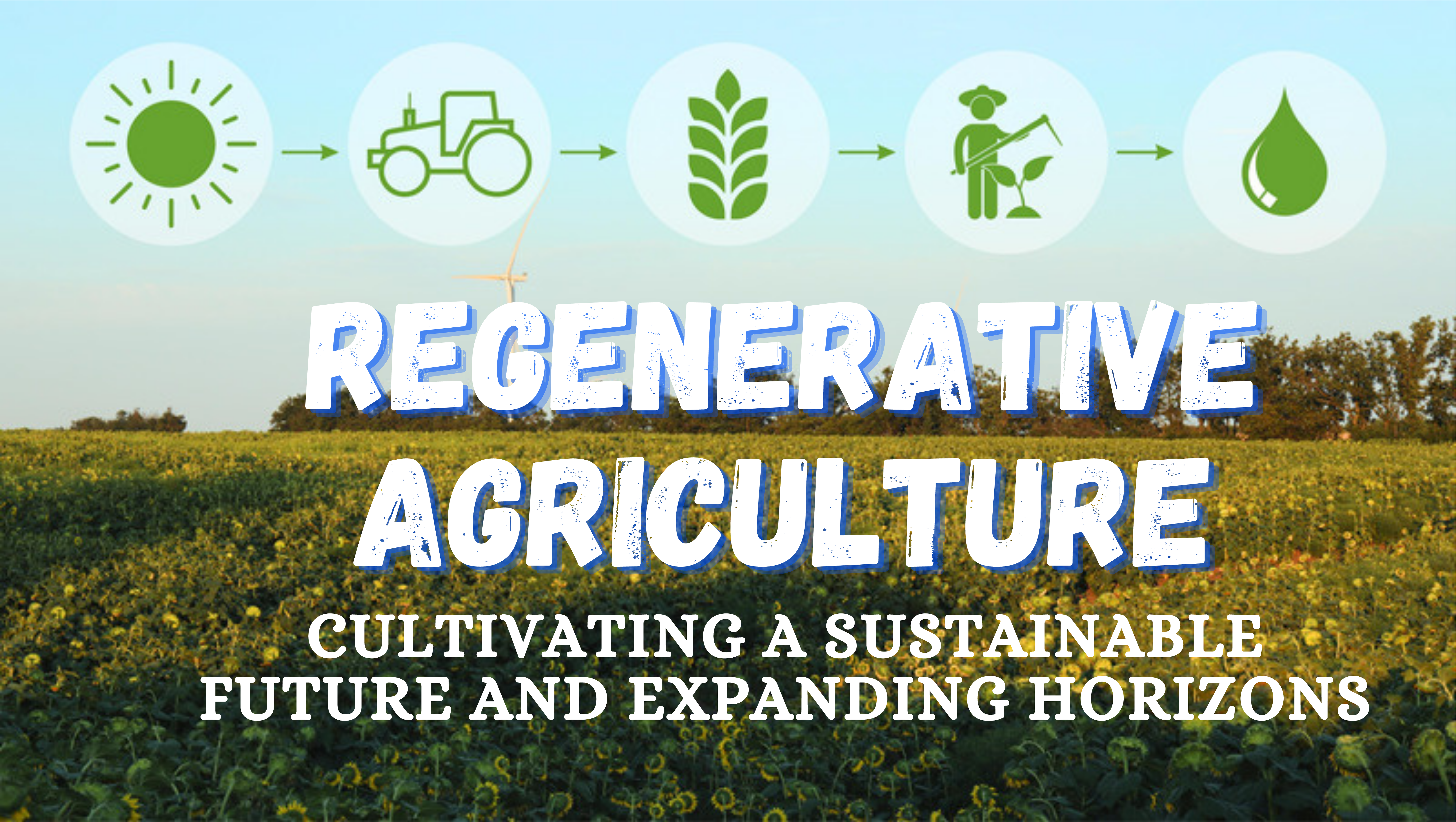In an era marked by environmental challenges and the urgent need for sustainable solutions, regenerative agriculture has emerged as a beacon of hope. This innovative approach to farming not only aims to restore ecosystems but also holds the potential to revolutionize the way we produce food. In this comprehensive exploration, we delve into the core principles, benefits, and the expansive horizons of regenerative agriculture.
Understanding Regenerative Agriculture
Regenerative agriculture is not just another farming method; it’s a philosophy that transcends traditional agricultural practices. At its essence, it seeks to rebuild and improve the health of our soils, enhance ecosystem biodiversity, and mitigate climate change through carbon sequestration. Unlike conventional farming that often leads to soil degradation and environmental harm, regenerative agriculture focuses on regenerating natural systems and leaving the land healthier than it was found.
The Pillars of Regenerative Agriculture
1. Soil Health Enhancement:
Central to regenerative agriculture is the restoration of soil health. Techniques such as cover cropping, no-till or reduced-till farming, and the application of organic matter are employed to enhance soil structure, increase water-holding capacity, and foster microbial activity. Healthy soils act as a foundation for robust plant growth and sustainable agriculture.
2. Biodiversity Restoration:
Nature thrives on diversity, and regenerative practices embrace this principle. Crop rotation, intercropping, and integrating native plants are strategies that encourage biodiversity. By creating a diverse ecosystem, farmers can promote natural pest control, reduce the reliance on chemical inputs, and bolster resilience against pests and diseases.
3. Holistic Management:
Regenerative agriculture is not limited to the field; it extends to the entire farm system. Holistic management considers factors like animal integration, rotational grazing, and agroforestry. These practices promote ecological balance, reduce soil erosion, and create a harmonious coexistence between different elements of the farm.
4. Carbon Sequestration:
An essential aspect of regenerative agriculture is its potential to sequester carbon from the atmosphere and store it in the soil. Practices like cover cropping, agroforestry, and the use of compost contribute to increased soil organic matter, which aids in carbon capture. This aspect of regenerative farming makes it a powerful ally in the fight against climate change.
The Benefits of Regenerative Agriculture
- Improved Soil Health and Fertility: By focusing on soil regeneration, regenerative practices lead to improved soil structure, nutrient availability, and microbial diversity. This results in healthier crops with higher yields and reduced dependency on synthetic fertilizers.
- Water Retention and Resilience: Regenerative practices enhance water-holding capacity in soils, reducing water runoff and erosion. This makes farms more resilient to droughts and floods, ensuring consistent crop productivity even in the face of changing weather patterns.
- Biodiversity Conservation: Encouraging diverse plant species and habitats benefits not only farmers but also local ecosystems. Regenerative agriculture creates habitats for pollinators, birds, and beneficial insects, contributing to overall biodiversity.
- Climate Mitigation: The carbon sequestration potential of regenerative practices cannot be underestimated. As soil organic matter increases, carbon dioxide is drawn from the atmosphere and stored in the soil, acting as a natural carbon sink.
- Economic Viability: While transitioning to regenerative practices may require initial adjustments, the long-term benefits can be economically advantageous. Reduced input costs, improved soil health, and higher yields contribute to a more sustainable and profitable farming model.
The Expansive Horizons of Regenerative Agriculture
The impact of regenerative agriculture reaches beyond individual farms; it has the potential to transform entire landscapes. As consumer demand for sustainably produced food grows, regenerative practices offer a solution that aligns with these expectations. By prioritizing soil health, biodiversity, and carbon sequestration, regenerative agriculture addresses not only the needs of today but also the needs of future generations.
In regions where small-scale farmers face economic and environmental challenges, regenerative practices can provide a lifeline. These practices empower farmers to build resilient systems that are better equipped to withstand fluctuations in climate and market conditions.
Challenges and Opportunities
Implementing regenerative practices is not without its challenges. Transitioning from conventional methods requires knowledge, resources, and sometimes, a shift in mindset. However, as awareness and interest in regenerative agriculture grow, so do the opportunities for collaboration, education, and policy support.
Conclusion: Sowing the Seeds of Change
Regenerative agriculture is more than a farming technique; it’s a movement that reimagines our relationship with the land. By prioritizing soil health, biodiversity, and ecological balance, regenerative practices offer a path to sustainable food production, climate mitigation, and a thriving ecosystem. As farmers, consumers, and stewards of the planet, embracing regenerative agriculture means sowing the seeds of change that will yield a more resilient, sustainable, and harmonious future for all.

